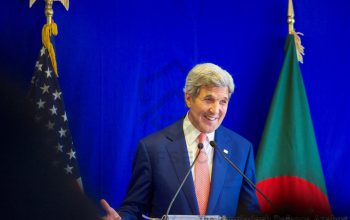The confrontation with China has exposed India bear. It comes as the South Asian country is dealing with a surging COVID-19 epidemic, irked neighbours upset with its jingoistic policies and moreover an economy that is also on the verge of recession. In this extreme climate India’s population is looking for someone to blame. And surprisingly Bangladesh found itself as a convenient punching bag even after the “India friendly” government in Dhaka provided India with every available facilities on request.
Numerous Indian media outlets published degrading articles after China provided duty-free access to 97% of all Bangladeshi products exported to the country.
The trade deal is beneficial for both countries with China wanting to move its labour intensive industries to Bangladesh because of rising wages there.
Bangladesh will benefit in turn through generation of employment and reduce the trade gap with China through the tax free facilities on its exports. The facilities will be availed from 1 July for 5,161 in addition to 3,095 products. The Chinese government cleared the deal a day after the Galwan Valley clash between Indian and Chinese forces. Indian media connected the trade deal with the clash though the deal was a result of strong diplomatic relations between Bangladesh and China.
Bangladesh Foreign Minister AK Abdul Momen lambasted the Indian media for their crude comments describing Bangladesh as a “charity” case. In fact Bangladesh provides transit to India for free whilst the country is burdened with higher maintenance costs incurred for damage done to road and infrastructure as well as risk from Indian truckers bringing with them HIV/AIDS.
Hyper nationalism in India has been fuelled by Hindu extremist ideologies of the ruling BJP, which thrives on anti-Muslim activities. There is also a growing rift between Muslims and Hindus in India as a result of the widespread discrimination against the minority Muslim community in the country.
The neo-Nazi like behaviour has also spread inside India’s armed forces, which was once a bastion of secularism free from discrimination of Indian society. This has led to increasing confrontation with neighbouring countries including Bangladesh, China, Pakistan and even Nepal though many problems could be resolved non-militarily.
China has downplayed the threat from India given due to its superior military and economic capabilities. It focuses on reunification of Taiwan with the mainland however China’s absolute military industrial and logistical prowess would enable them to dominate India on the frontline if push comes to shove.
Chinese media described the Indian military as being undisciplined. “Indian forces use weapons bought from different countries, which may not coordinate with each other well, not to mention their undisciplined troops who can blow up their own submarine in a dockyard and shoot down a friendly helicopter”, Chinese observers noted. The incidents being referred to appear to be the explosion on the INS Sindhurakshak submarine in Mumbai in 2013 and the accidental shooting down of an Indian Air Force helicopter during the Pakistan Air Force attack in response to the Balakot strike last February.
“In a potential self-defence counter-attack, China will secure its own territory and not likely claim Indian-territory after emerging victorious, but the battle will deeply hurt India so much that global position and economy would go backwards to decades ago” wrote the Global Times. China also enjoys strategic level relations with most of India’s major neighbours in contrast to India.
India’s relentless confrontational policies puts it at odds with the rest of the region therefore it looks like India’s woes have just begun.




